Welcome to Astronomer in Shanghai! Thank you all for supporting this blog and for following my adventures and life in Shanghai! As covid-19 continues to keep many of you sheltered in place, I hope this blog highlights that while isolation is difficult, eventually things improve. In Shanghai, life is close to returning to a new normal. I do want to emphasize that the timeline here will not be applicable everywhere. However, we are all in this together and if we cooperate with social distancing guidelines things will improve.
If you find my blog inspiring or helpful, please subscribe and let me know! To subscribe, enter your name and e-mail on the right side of the page. Once subscribed, you’ll receive an e-mail with each new post. If you have any questions about how Shanghai is recovering from covid-19, how I’ve dealt with it, or life in Shanghai, please ask. Instructions are on the “To Comment” page. Also, please share this blog with anyone who needs reassurance that eventually life will return to a semblance of normalcy.
Life in Shanghai
As I’ve previously done, I want to begin this post by checking in with you. I hope that you, your family, and your friends are all staying safe and healthy. Regardless of whether you live in a state or country that has prematurely reopened, I hope that you are still following social distancing guidelines and are able to work from home. As April rolled into May and hopefully life around you began to bloom, I want to hear how sheltering in place has been going. I know, that it was much easier for me to stay indoors and not leave my apartment when it was colder and rainier. So, I’m sure that it may be more difficult to do stay at home now than it was a few weeks ago. Despite all that, I hope that, assuming you feel comfortable leaving your homes, you are able to go outside and enjoy the nicer weather, maybe for walks, runs, or hikes, while still staying away from others and wearing masks.
Life continues to maintain it’s new normal here in Shanghai. Some schools have already reopened. From what I understand, the reopening is staggered in an attempt to minimize the stress on the infrastructure. However, SJTU, the university where I work, still has not announced an official reopening date for students. On other notes, the temperature check policies have begun to relax here, but most everyone still wears masks. While I’ve discussed my views on the effectiveness of masks, I do wear them, even when it’s been very hot, which makes them more uncomfortable. The main reason it’s important to wear masks are 1). they prevent the spread of spittle between people, which is one of the main ways the virus can be transmitted and 2). solidarity and support that everyone needs to work together to slow the spread of the virus. So, even though the US leadership doesn’t seem to understand the importance of wearing masks (looking at you Mike Pence), please wear a mask when you go out. It doesn’t need to be an N95 mask. Cloth masks or hospital masks (what I wear now) do both tasks I previously mentioned.
In terms of the overall statistics here in Shanghai, the numbers have continued to improve, which I find very promising. I realized I’ve never divulged where I get my numbers, so to be completely transparent, my numbers come from SHINE, which is part of the Shanghai Daily, the largest English Language Newspaper in Shanghai (posted on WeChat). As of May 3rd, there are just 33 cases remaining in Shanghai (and 33 in Beijing). So, the recovery rate in Shanghai has increased up to 93.8%. For comparison, the reported recovery rate in China as a whole is 93.6%. While I know some of you are suspicious about the numbers being reported in China, I don’t think that the number of cases in China is any more misrepresented than it is in the US (i.e., not everyone who is sick actually went to the hospital or was correctly diagnosed early on). I spoke with my boss, Prof. Ying Zu, about this and he mentioned that the fatality rate in China is actually the median rate for East Asia. So, my guess is that the reason the numbers are lower (than in the US and Europe) has more to do with the quick, severe, and draconian response rather than falsified data. Additionally, practices like wearing masks are more commonly accepted here. That being said, I do think that (assuming people maintain social distancing and sheltering in place) for another month, things should improve. However, I will note that certain states and the current administration are playing a very dangerous game by attempting to reopen the economy before the curve is actually flattened.
In terms of Astronomy, this was a relatively normal and productive week. I had my regular Zu group telecon as well as a few other Zoom meetings. I spent most of my work working on my DESI project, looking at the spectroscopic completeness of clusters, and made some really nice headway and should have some interesting (at least to me) results soon! I also finished up the latest draft on my paper comparing different versions of the stellar mass halo mass relation, so hopefully that will be submitted soon! Also, since my friend Steve Schwartz asked, near the end of this post, I’m going to provide a deep dive into my research and attempt to explain the topics so you can all understand! :).
Here in Shanghai, the weather has transitioned from warm to very hot! On Sunday, the high was 95! The last few days have all been in the upper 80s. Thankfully it will cool off to the low 80s later this week. This is so much hotter than what I’ve been used to in Ann Arbor or Saratoga, especially for the beginning of May. Prior to the uncomfortably hot weather, I did go for 4 runs this week (with my new running shoes 🙂 )! My personal philosophy is that if it’s above the low 80s, then I won’t run outside (no need to hurt myself). So, I may have to find a local gym soon. Additionally, since it has been a mixture of hot and rainy the last few days, I didn’t take as many photos of Shanghai in bloom. Instead, I decided to showcase what Shanghai looks like at night!







Given the heat the last few days, it hasn’t been as crowded, but you can see that even at night, the Shanghai skyline is very majestic and Shanghai is always lit up!
While there were no birthday celebrations this week, I still had a lot of fun! On Thursday, my friend Heather organized a vegan cooking and dinner night (photos of the food in that section), which was a ton of fun! You can see an action shot of me making vegan mozerella cheese! I haven’t done a ton of group cooking, prior to moving to Shanghai, but it was so much fun exchanging recipes and experimenting in the kitchen! Following cooking, we enjoyed an amazing vegan feast and fantastic conversation! I look forward to trying more recipes soon!



I also had to share this photo of an adorable kitten that is living in my neighborhood! As you can see from the leash, thankfully this is not a stray kitten. Sadly, there are a lot of stray animals here in Shanghai.
Food in Shanghai
While this was another week where I didn’t go to any restaurants, as I mentioned, on Thurday, I had a fantastic vegan feast at my friends Heather and Shimi’s home. We made vegan mozzerella cheese, homemade seitan (which we saved for later), Pra Ram Tofu (tofu with a thai peanut sauce), Lebanese cauilflower (cauliflower with tahini sauce), kale pesto, and kale and mushroom salad! Additionally, my friend Anne-Sophie made mugwort and red bean paste glutinous rice balls (kind of like mochi)!









Everything we made was fantastic!! It was so much fun cooking together and I’m looking forward to doing it again! I think the Pra Ram Tofu was my favorite. I love a good peanut sauce! So even though I haven’t eaten out as much lately, I think we can all agree that you don’t really need to eat out when you can cook your own delicious food!
In addition, I turned my portion of the seitan into a delicious seitan and vegetable stir fry with peanut sauce and made tofu lettuce wraps and chocolate tahini brownies! So, I’ll have plenty of good eating for this upcoming week as well!
Jewish Life in Shanghai
This weekend is the Limmud China festival. For those of you, like myself, who are unfamiliar, Limmud is a Jewish learning festival hosted in different cities/countries around the world. Generally, in China, Beijing and Shanghai alternate hosting Limmud. This year it’s a digital event done on Zoom. So, this week, all of the Jewish activities that I participated in this week were part of Limmud.
On Friday, we had a virtual zoom Shabbat service. Then on Saturday, Moishe House hosted an in person Havdalah (a ritual to mark the end of Shabbat). It was really nice being able to interact with both friends and community members stuck abroad while also seeing some of my friends who are here in Shanghai! Additionally, the chocolate tahini brownies I made for the Havdalah were a hit!
On Sunday (and on Monday), there were a variety of different sessions for Limmud. I attended sessions discussing the history of Jews who left Shanghai to go to Macao, a discussion on the similarities between Jewish and Chinese cultures, and a discussion about Shanghai’s Jewish history! While I might be spending too much time staring at my computer (who isn’t these days), I found a lot of these discussions to be very interesting. Hopefully next year the in person event will resume!
Astronomy Lesson
Before I get started with my Astronomy lesson, I wanted to let you all know that I just passed the 1 year anniversary of successfully defending my dissertation and becoming Dr. Jesse Golden-Marx! It’s been an eventful year: visiting Shanghai, moving from Ann Arbor, moving to Shanghai, becoming a postdoc at SJTU, and building a life in Shanghai. So, to commemorate this anniversary, I’m going to explain my research to you. The goal of this is to explain it so that everyone can understand it. So, if you have questions, or are confused about any jargon please ask! Of note, all the images I provide are from the Sloan Digital Sky Survey and are galaxy clusters that I’ve used in my research.
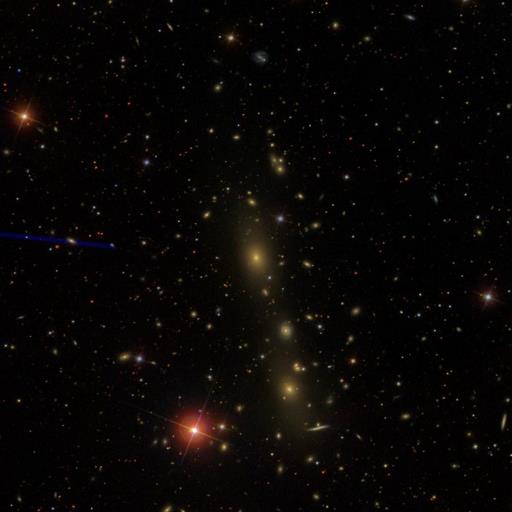
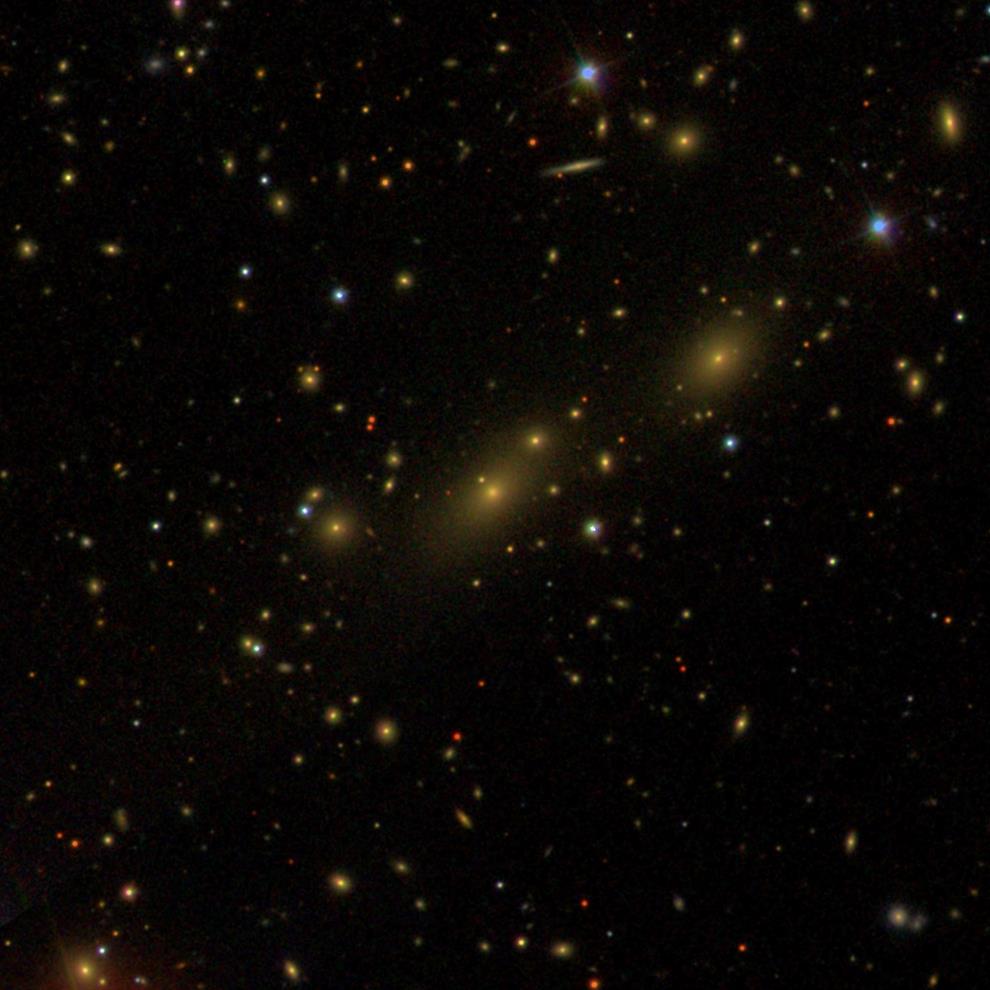

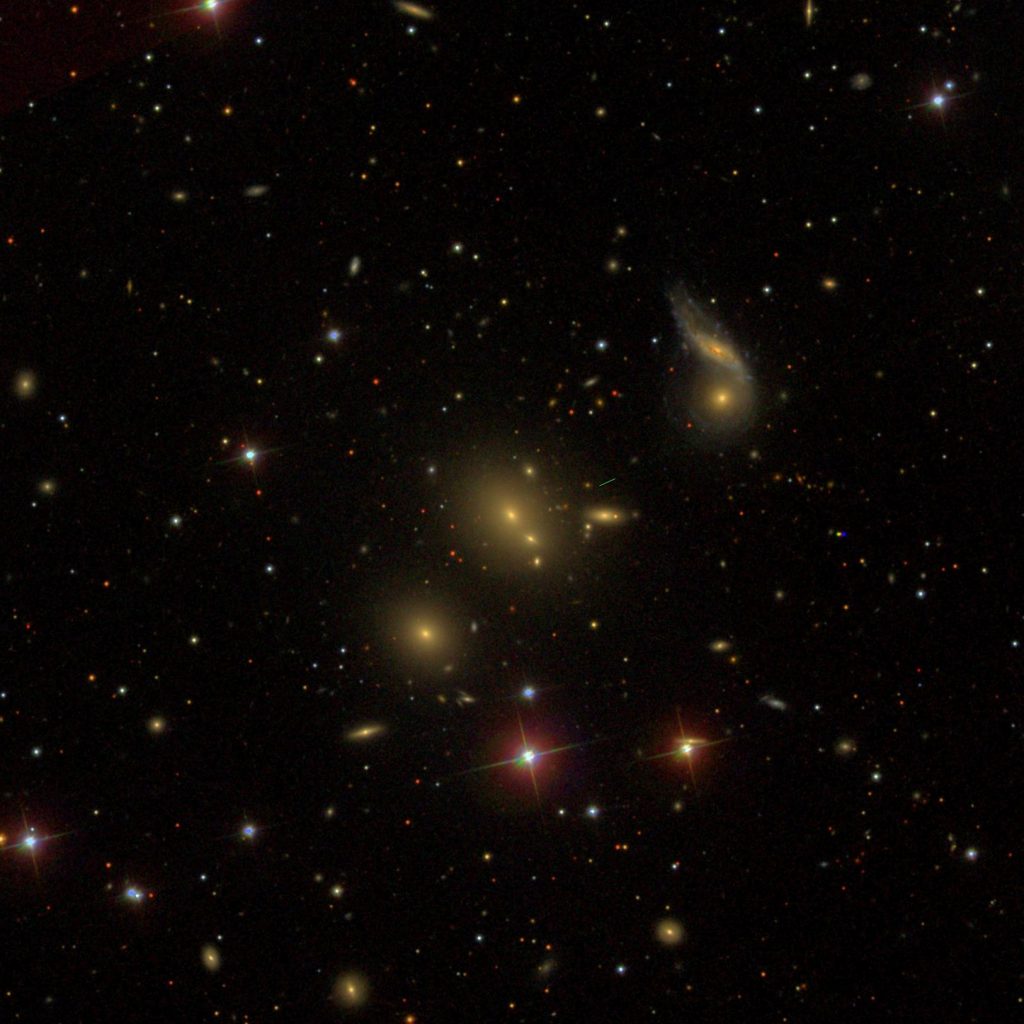
In the broadest terms, my research focuses on galaxy clusters. Galaxy clusters are the largest gravitationally bound systems in the universe. On average these systems are 10^14 times more massive than the sun. Clusters have three main components: galaxies, which are made up of stars; dark matter; and hot, x-ray emitting gas. Dark matter is non-luminous matter that doesn’t emit light in any wavelength (we don’t know what kind of particle it is). However, dark matter does exert a gravitational force on the galaxies.
My research focuses on the connection between galaxies and dark matter. Specifically, I work in a subfield known as the galaxy-dark matter halo connection. Since dark matter can’t be seen, you may be wondering what a dark matter halo is. The halo is the underlying substructure needed for a galaxy to form. One analogy I like to use is that the halo is the concrete base of a swimming pool that surrounds and defines the shape of the pool, while the water is the galaxy. Moreover, my primary interest within the galaxy-halo connection is understanding the formation and evolution of the brightest central galaxy (BCG), the bright, massive galaxy that is located at the center of each of these images and is most strongly connected to the dark matter halo (since it’s at the center).
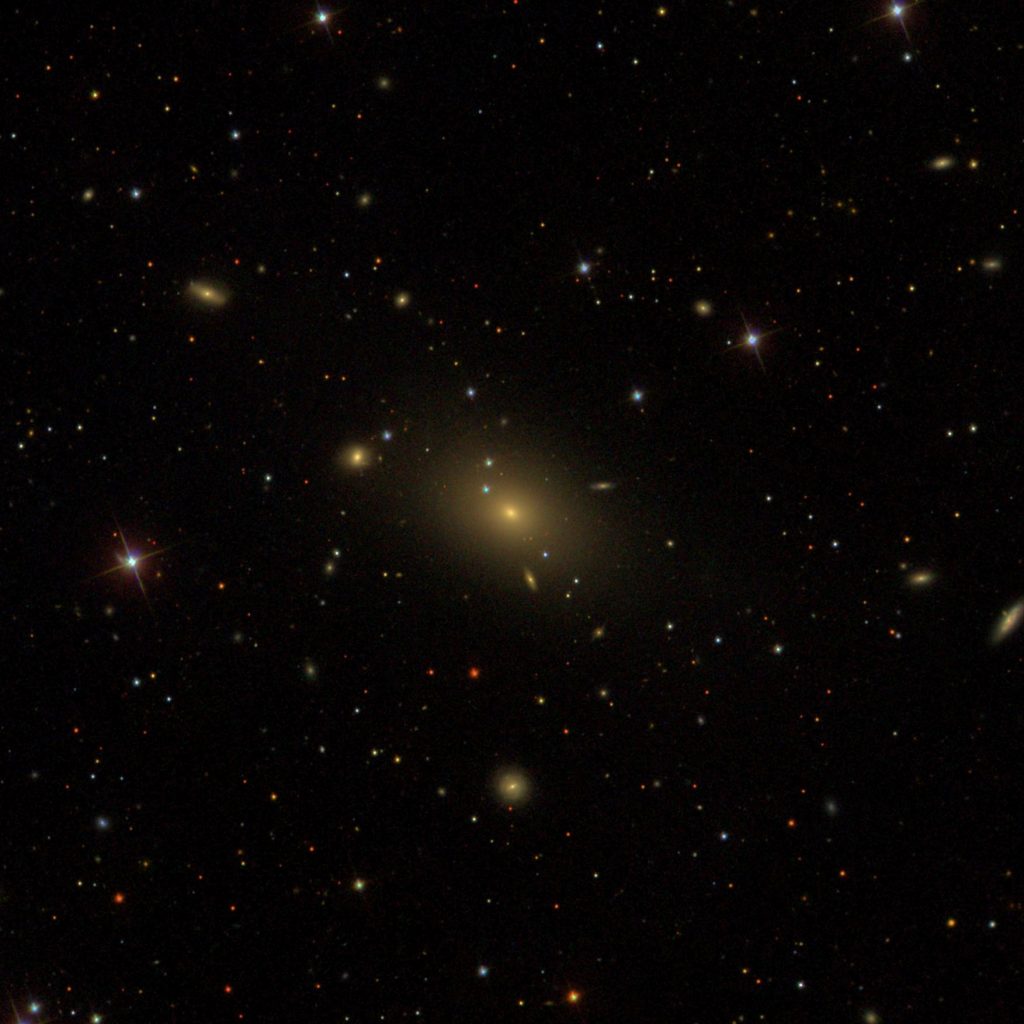

Within the galaxy-dark matter halo connection, much of my dissertation and current research focuses on the stellar mass – halo mass relation. This is a scaling relation that compares the amount of stellar mass contained within the central galaxy to the amount of dark matter contained within the cluster. In general, the ratio of stellar mass to halo mass is anywhere between 1/100 to 1/1000. So, there’s a lot more dark matter! We can observationally measure the stellar mass by measuring the amount of light (or brightness of the galaxy). However, measuring the amount of dark matter is difficult. One method of doing that is richness – mass scaling relations, where richness is the number of cluster members. Another that I use is the caustic techniques, which uses the motion of the galaxies to trace the gravitational potential well of the cluster.
Within my studies of the stellar mass – halo mass relation, my analysis incorporates the magnitude gap, which is the difference in brightness between the central galaxy and faint satellite galaxy, as a third parameter. To determine which are the satellites, it’s important to understand that all cluster member galaxies (in fully formed clusters) have a similar reddish color (as shown visually) because they form at a similar time and run out of gas to form stars at a similar time. Incorporating this cluster membership information within the stellar mass – halo mass relation allows me to study the hierarchical formation of central galaxies. This is a model where the biggest galaxies grow by eating (or merging) with the fainter galaxies. To study this connection, I use a mixture of Bayesian statistics, statistical modelling, and computer coding. I’ve studied this relationship within nearby, intermediate, and higher redshift galaxy clusters (using the Dark Energy Survey data).
In addition to my work on the stellar mass – halo mass relation, I’m also working on a project at SJTU to measure the luminosity function of galaxies in clusters. The luminosity function is simply a distribution function that models the number of galaxies within a cluster (of a given mass) with a given brightness. Simply put this measurement counts the number of bright galaxies within a given region (corrected for area). This relationship can also be used to inform how central galaxies form and evolve.
Additionally, I’m also working on a project within DESI (Dark Energy Spectroscopic Instrument) that is looking at the spectroscopic completeness of galaxy cluster members. This just means determining what fractions of previously detected cluster members (all the red galaxies in the above images) will have spectra taken. A spectrum displays absorption and emission lines that tell us about the chemical composition of galaxies and stars and can be used to determine the distance to the galaxy. By having a spectrum of a galaxy, we can more accurately identify the cluster members.
That’s the science that I’m currently working on! I hope you find it interesting.
Overall, despite the oppressive heat, this was another enjoyable and productive week. Even though I’m sure many of you were staying home, I hope that you were also able to do some fun things this week.
I hope that this update about my life, Astronomy research, and the covid-19 situation in Shanghai interests you and provides you with hope that things will improve and reach a new normal. This upcoming week should be another fairly normal research week. If you have any questions, comments, or concerns about the current covid-19 situation or my research, please let me know. If you need to talk to someone about how to stay positive and productive while you shelter in place, please reach out. I want to help support you and assure all of you in any way that I can.
In peace,
Jesse
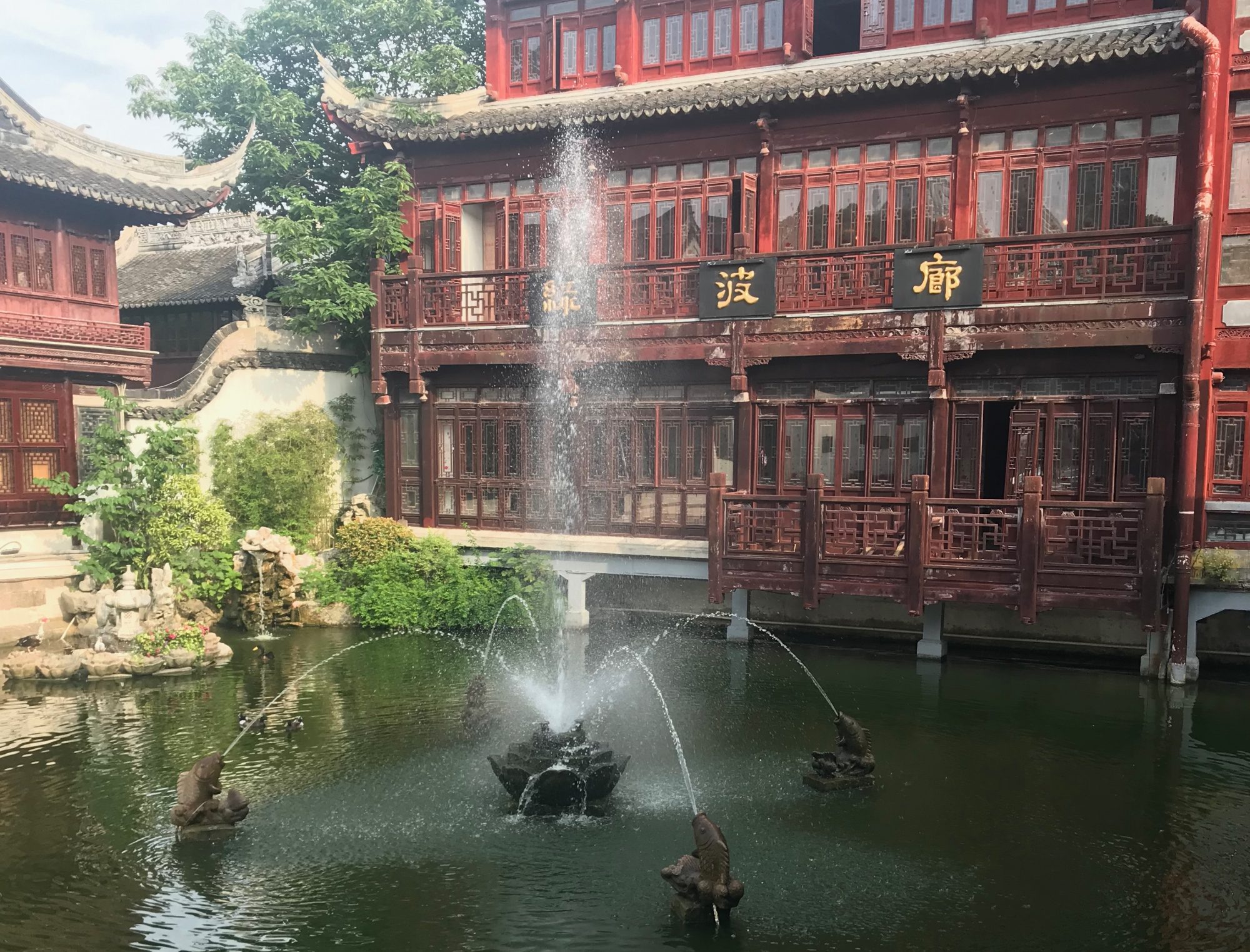
Hi Jesse,
I can’t believe how hot it is in Shanghai! I guess summer comes early and stays a while. I hope you’re able to find easy ways to stay cool (get an ice tray). Today is the first time it’ll creep above 70 in Boston in 2020, but then it’s dropping back to the 50s, so the weather is weird here. The pictures of Shanghai at night look really cool. The city looks so futuristic when it is all lit up. The limmud festival sounds like an interesting way to pass the time. I’m especially intrigued by the Chinese-Jewish connection. Your vegan feast looks wonderful as always. I’m glad you get to hang out with friends and share some of the recipes we’ve collected over the years. Great job explaining your research! I hope everyone else can enjoys learning about what you do! Also, Congratulations on the one year anniversary of becoming a PhD! I hope the weather cools off this week and that it’s a healthy, safe, and productive one.
Love,
Emmet
Thanks Emmet! Yeah, It’ll cool off a little, but it’s now mostly upper 70s low 80s, so I’ll have to be prepared for a hot summer. I agree that Shanghai looks futuristic! The main emphasis of the Jewish Chinese connection was the emphasis placed on family and education. While I agree with this, I was hoping for something deeper. Thanks for the compliments on the research explanation (though you should understand it! :). ).
Thanks for the astronomy lesson. I think I followed it up until the red-ness. I am red/green color blind, so I guess I would not be much of an astronomer. Stay safe and well and Go Blue!
Hi Steve! You’re very welcome. I’m glad you enjoyed the Astronomy lesson! The red-ness is tricky (even if you’re not color blind). When I refer to “red” it’s basically any galaxy that’s yellow/orange. For research, we plot the color mathematically, so you’ld be able to see it even if you couldn’t in the picture! Hope you and Susan are staying safe and healthy! Go Blue!
Jesse, thank you for sharing your life in Shanghai with us. You broke your research down and made it easy for the novice to understand! The pool analogy was really great! Continue to enjoy your opportunities there and congratulations on all of your accomplishments, Dr. Jesse Golden-Marx!!!
Thanks Peg! I’m glad that you could understand my research! I really like the pool analogy, too. I think it’s a really visual description for a non-visual concept. 🙂 I hope that you, Art, and the rest of your family continue to stay safe and healthy!
Thanks for sharing your research and what we know about dark matter and its relationship to galaxies. I always find it incredible what we can measure and know given how we know so (relatively) little about our universe.
I make seitan just about every week: my main source of protein. Do you boil yours , or steam it or bake it. I used to boil mine but for the last year or so I have been baking mine (rolling the seitan in aluminum foil and baking at 350 for 60 minutes. Makes for a very chewy tight seitan. Always great to saute the finished seitan but as I add nutritional yeast and spices (onion, garlic, cumin (or curry) and soy (and sometimes miso) my seitan is flavor rich directly from the oven.
Cuomo wants to divide NYS into three or four distinct areas in light of the incidence of disease and deaths and while that may make a lot of sense in terms of re-opening businesses and the economy in general it is hard for me to understand how movement from problem states and problem areas within NYS may not exacerbate the situation. Turns out that Saratoga Hospital is the only hospital in the Capital District that is again permitted to offer “elective” surgery – much to the anger and disappointment of AMC and many other hospitals..
Hi Bernard! The lack of what we know about the universe is part of what drives me to do research, so I definitely agree with that!
We boiled the seitan we made. It tastes great, but was a little harder (not as soft and chewy) as I’ve had in the past. I’m not sure if over or under kneaded it. If you have a recipe for the baked Seitan, I’d love to see it and give it a try! Yours sounds delicious!
Thanks for the update about NY state. I agree with you about the division of the state. It’ll work better economically than safety wise. Unless they will physically prevent people from leaving regions (as was done in China), it’s not going to be much more effective. I do think that it’s good that Cuomo is trying to solve this problem though. So, hopefully a good solution will be found.
My seitan recipe is very simple.
1 C gluten
3 T nutritional yeast
1 T chickpea or soy flour
1.5 t onion powder
1.5 t garlic powder
1 T curry powder or cumin
1 t salt
2 T soy sauce
1 T miso
Water (to make a very scant cup with all the liquids)
I mix all the dry ingredients and I mix the wet so that the total volume of wet is less than a cup, and then I add the wet to the dry and mix and knead until I have a glutenous ball. Occasionally I mix everything in a processor for about 8 minutes. That mixing increases the strength of the gluten and can make it more “stringy” if you are looking for something more like chicken.
I usually let the seitan sit for about 30 minutes (can be longer) covered, so that it does not dry out and that “rest” helps the gluten develop. I heat the oven to 350 F (176 C) and then roll the seitan into a thick sausage about 5 or 6 inches long, diameter about 2 inches and roll and seal the seitan in aluminum foil – to prevent the seitan from expanding . I bake this for 60 minutes, removing the aluminum from the seitan to allow it to cool .
The spices I use are because I like those flavors but if you want different flavors you might use vegetable stock in place of water or fake chicken stock etc (and so ignore the curry or cumin ). I have also used aquafaba (liquor from cooking beans) in place of the water and occasionally whey I have left over from cheese making (though most often I boil the whey to stop bacterial growth (I add cultures to the milk when I make the cheese) and then either ferment ON the whey (adding sucrose) or ferment the whey itself (or try to, using a yeast that is supposed to be able to ferment lactose (B. Claussenii). Fermented whey was a folk drink drunk in parts of Scotland up to the beginning of the 20th C when it either fell out of favor or was simply replaced by breweries and distilleries as people stopped making beer and other drinks at home. The Scottish drink was known as blaand (as in blond, not “bland”) and I suspect that the yeast that fermented the whey was fungi that was in the wooden kegs in which they transported the whey (and Clausseni is a yeast that can ferment wood sugars and so can live in barrels and kegs – The B. is Brettanomyces (tr: “British fungus”) and “Brett” is a strain of yeast that was identified by Claussen (a Danish lager maker) in 1904.
Thanks Bernard! Your seitan recipe sounds really good! I think chickpea flour may be the only thing hard for me to get here, but I’ll definitely give it a try!
I add the soy flour and /or chickpea to add more complexity to the flavors. You can certainly skip them. You can also use a processor to REALLY knead the gluten and develop much more stringy protein threads… You might also reduce the nutritional yeast a little (1 T may be sufficient – sometimes I suspect that as much as 3 T affects the final texture … )
Hi Jesse, great job on the astronomy lesson! Although I already know you’re research pretty well, it’s still fun for me to read it in the simplified version 🙂
Great to hear things are going well in Shanghai! Hopefully Michigan catches up soon (we have stay at home extended through the end of May, so maybe things will be better in 4 weeks? We’ll see!)
Thanks Ryan! I’m glad you enjoyed the research description! Though, you’ve heard the detailed version quite a few time. 🙂
I hope that Michigan catches up soon. Glad to hear that stay at home was extended through the end of May. Hopefully things will improve and people will stop protesting, too.
Jesse, thank you for another excellent post. Shanghai looks lovely by night. And you did a great job of explaining your research. Like Peg, I found the swimming pool analogy helped me to understand how the halo serves as the substructure of a galaxy. A mark of a good scientist, to me, is to explain things clearly to an audience of nonspecialists, and you have succeeded.
I found myself fascinated, too, by the Limmud Festival. I was intrigued to learn more, so I discovered it is a UK charity designed to promote worldwide Jewry. I am eager to hear more about the connections between the Jewish and Chinese cultures. I also want to mention an interesting book about the Jews in China that my book club read a few years back: Peony: A Novel of China by Pearl Buck. Set in the 1850s, it is about the Kaifeng Jews of China who were so assimilated that they thought of themselves more simply as Chinese.
Finally, it is hard to believe how warm Shanghai is. Today was splendid weather in the mid to high 70s, but we are back to the 50s this week. I have the additional raspberries in the garden now, and the daffodils and tulips are in bloom. I miss you, Jesse.
Much love, Mom
Thanks Mom! I’m glad you were able to follow my research description and enjoyed the swimming pool analogy!
The main connection that was discussed between Jewish and Chinese cultures is the emphasis on family and education. Which are definitely true, but I was hoping for something deeper. Peony sounds very interesting, so I’ll have to see if I can find it!
I’m glad that you’ve got some warmer weather. It’s nice to hear that you’re garden is starting to bloom! I miss you, too Mom!